“Mississippi Burning: Trial Transcripts of Civil Rights Workers’ Murders” has been added to your cart. View cart
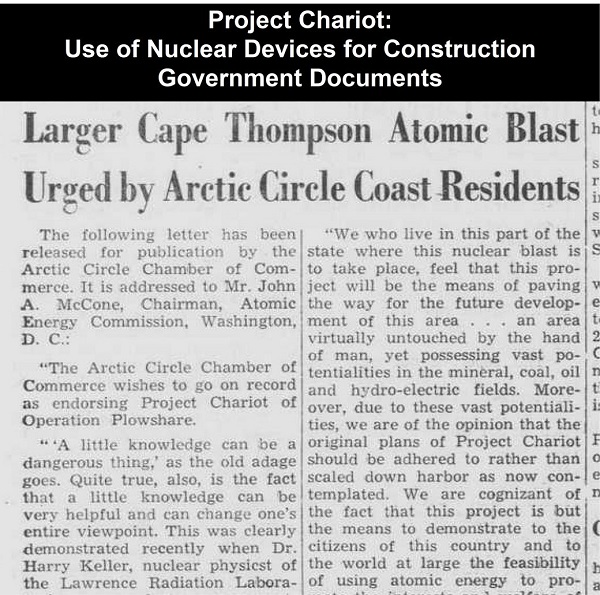
Description
Project Chariot: Timeline and Key Figures
Project Chariot: Timeline of Main Events
1957:
- Conception of Project Chariot: The idea for Project Chariot is conceived at the Atomic Energy Commission’s Lawrence Radiation Laboratory in Livermore, California, as one of many ideas advanced by Director Edward Teller.
1958:
- U.S. Atomic Energy Commission (AEC) Begins Action: The AEC starts acting on Project Chariot, a proposal to construct an artificial harbor at Cape Thompson on the North Slope of Alaska by detonating a string of nuclear devices. This project falls under the umbrella of Operation Plowshare, developed to explore peaceful uses of nuclear explosions.
- U.S. Geological Survey (USGS) Involvement: The USGS begins conducting geological studies on behalf of the AEC to assess the feasibility and safety of the proposed nuclear detonations at Ogotoruk Creek, northwestern Alaska.
1959:
- April 20, 1959: Newspaper coverage of Project Chariot begins in Alaska, including publications like the Nome Nugget and Fairbanks’ The Tundra.
1960:
- July 26 – August 28, 1960 (Brown Bear Cruise 268): The University of Washington’s Department of Oceanography conducts an oceanographic survey of the northern Bering and southeastern Chukchi Seas as part of Phase Three of Project Chariot. This cruise is jointly supported by the Office of Naval Research and the U.S. Atomic Energy Commission.
- November 1960: A 256-pound high explosive cratering experiment is conducted at the Chariot test site, northwestern Alaska.
- Reuben Kachadoorian’s Report: Reuben Kachadoorian publishes the “Supplementary Report on Geologic Investigations in Support of Phase II, Project Chariot in the Vicinity of Cape Thompson, Northwestern Alaska.”
1961:
- Reuben Kachadoorian’s Report: Reuben Kachadoorian publishes “Geologic Aspects of the November 1960 High-Explosive Test at the Project Chariot Site, Northwestern Alaska.”
- Start of Plowshare Nuclear Tests: The first two nuclear tests of the PLOWSHARE Program, Project GNOME and Project SEDAN, are conducted (though the date given for the report is 1983, the tests themselves began in 1961).
1962:
- AEC Activity Summary: The Defense Atomic Support Agency of the Sandia National Laboratories creates a report titled “Peaceful Uses of Nuclear Explosives Project PLOWSHARE,” summarizing AEC activity in the field.
- Bioenvironmental Report: The Technical Information Service Extension of the United States Atomic Energy Commission publishes “Bioenvironmental Features of the Ogotoruk Creek Area, Cape Thompson, Alaska,” including predictions and assessments of nuclear detonation effects.
- Oceanography Report: The Department of Oceanography, University of Washington, produces a technical report on the “Recovery of Drift Bottles Released in the Southeastern Chukchi Sea and Northern Bering Sea. Brown Bear Cruise 268, 26 July to 28 August 1960.”
- Project Plowshare Meeting: An Agenda and notes from a 1962 Project Plowshare meeting in Berkeley, CA, are generated.
May 29, 1963:
- Newspaper coverage of Project Chariot concludes.
1966:
- Comprehensive Environmental Report: The Committee on Environmental Studies for Project Chariot, under the United States Atomic Energy Commission, publishes the 1,266-page report “Environment of the Cape Thompson Region, Alaska,” with an introduction by John S. Kelly.
1973:
- End of Plowshare Nuclear Tests: The PLOWSHARE nuclear tests conclude, having been conducted from 1961 to 1973 at the Nevada Test Site (NTS) and other locations.
1983:
- Plowshare Program Technical Report: A report titled “Projects GNOME and SEDAN Technical Report the Plowshare Program” is published, describing DOD personnel and other participants’ activities in the first two PLOWSHARE nuclear tests.
1985:
- Long-Term Environmental Report: A report on the long-term effects of Project Chariot on the environment is published: “Reconnaissance Observations of Long-Term Natural Vegetationa1, Recovery in the Cape Thompson Region, Alaska, and Addition to the Checklist of Flora.”
1992:
- Historical Brochure: The Bureau of Indian Affairs publishes “The Legacy of Project Chariot,” a brochure summarizing the project’s history and impact.
Project Chariot: Cast of Characters
- Edward Teller:Bio: Director of the Lawrence Radiation Laboratory in Livermore, California. He is credited with conceiving the idea of Project Chariot in 1957, along with many other ideas for the use of nuclear devices.
- Reuben Kachadoorian:Bio: A key figure in the U.S. Geological Survey’s (USGS) investigations for Project Chariot. He authored significant reports, including the “Supplementary Report on Geologic Investigations in Support of Phase II, Project Chariot in the Vicinity of Cape Thompson, Northwestern Alaska” (1960) and “Geologic Aspects of the November 1960 High-Explosive Test at the Project Chariot Site, Northwestern Alaska” (1961), providing crucial geological data for the project.
- John S. Kelly:Bio: Director of the Division of Peaceful Nuclear Explosives for the United States Atomic Energy Commission. He wrote the introduction to the comprehensive “Environment of the Cape Thompson Region, Alaska” report published in 1966.









Related products
-
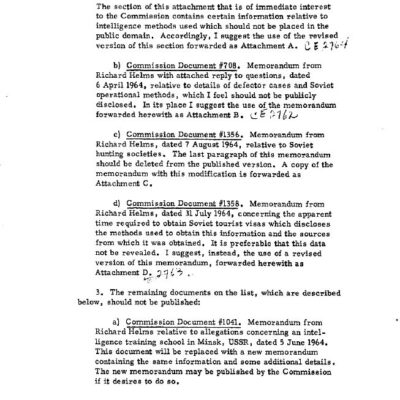
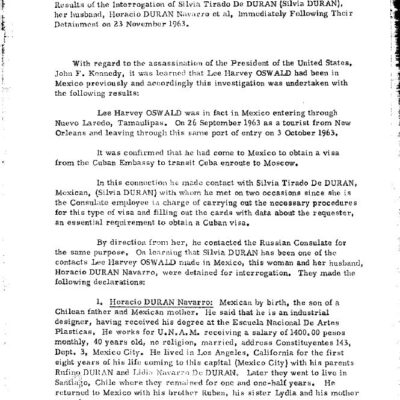
John F. Kennedy Assassination: CIA Reports
$19.50 Add to Cart -

John F. Kennedy 1960 Presidential Election Campaign
$19.50 Add to Cart -
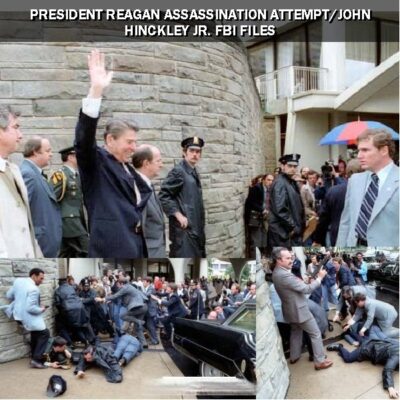
President Ronald Reagan Assassination Attempt John Hinckley Jr. FBI Files
$19.50 Add to Cart -
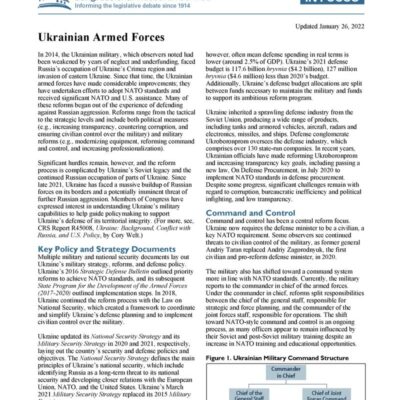
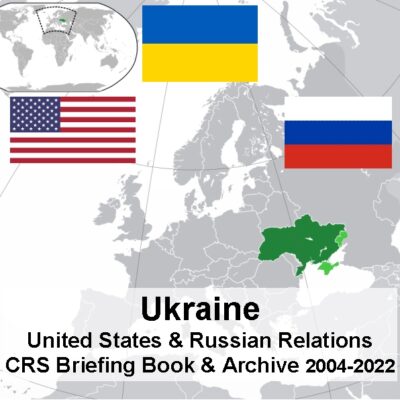
Ukraine – U.S. & Russia Relations: CRS Briefing Book 2004-2022
$3.94 Add to Cart